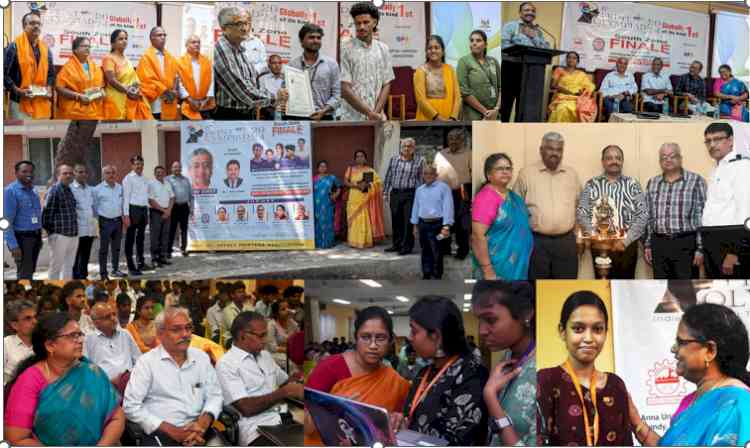Aravali Hills: A place to hope for Avian flocks
White eared Bulbul. (by Dr.Kushagra, HOD, Environmental Science, Amity University Haryana) Amity University Haryana is surrounded in a much diversified environment of Arravli Hills. Hence it gives lot of options to research in the area of environment...

White eared Bulbul.
(by Dr.Kushagra, HOD, Environmental Science, Amity University Haryana)
Amity University Haryana is surrounded in a much diversified environment of Arravli Hills. Hence it gives lot of options to research in the area of environment field.
Summer Bird Count 2017: 13 May 2017 was dedicated to explore status of avian stock of our neighbourhood; this date also coincides with ‘endemic bird count’ day. To explore our winged friend around, I along with Dr Chander Shekhar choosen a least known birding ground, arid hills of Aravali just in vicinity of IMT Industrial complex Manesar. This region is under constant threat of exploitation and degradation due to wings of urbanization and related activities. Similarly 15 different Birder group explored different birding landscape of Delhi-NCR locations including Yamuna flood plain, JNU, Mangar, Aravali Biodiversity Park, Nazafgarh, Dighal and stretches of Noida on same day, with idea to brought status of native birds of NCR.
The Bird count in summer has a great significance as it gives endemic/local bird stock, native to the region. While in winter Bird count, several migratory species also arrived and mixed up with native population, It is become difficult to have idea about native species in winter. So the counting of Birds in summer not only gives idea about native bird diversity, but also provide clue about their abundance, distribution and also brought prospective of their threat level and conservation. With help of a local veteran Prof. KK Yadav (Ex-Town Planner, Haryana Govt.), we explored Aravali hills of Manesar which contains several natural drainage system and augmented manmade water recharge structures like check dams, recharge points, bunds and even earthen dams; a testimony of recent awareness among the local people regarding water scarcity and their indigenous solution by adapting measures of watershed management. As compared to nearby plains, these hills still reserve some moisture that in turn supporting natural forests (offcurse semi-arid and thorny), animals and rich Birds diversity. A total 51 bird varieties were spotted among few are median one including Bank Myna, Brown Headed Barbet, Yellow footed pigeon, Paradise Fly catcher, Common Wood shikre, Great Thorated Martin, Silver bill, yellow crowned woodpecker, Black rumped Flamback and Red Avadavat along with other popular commonest birds including peafowl, varieties of Dove, Sun Birds, Pigeon, many Sparrows, Babbler and koel.
Arawali hills around Manesar still hosts dense populations of birds in spite of rapid industrialization, massive change in land use pattern, depletion of water resources along with high air and water pollution regime. Birds are very sensitive and their livelihood are under serious threat due to air pollution, qualitative and quantitative degradation of water sources, radiation exposure due to multiple mobile towers, alien urban planning (high rise and ample use of glasses) and high noise regime near urban area including Manesar and other NCR locations. Apart from these hurdles, crop residue burning at extensive level during summer and start of winter around Delhi impose potential threat to avian livelihood. Although limited forest fire regime brought positive impact on bird life by bringing new food material but this burning of crop residue at extensive level not only aggravate Air Quality deterioration; chocking of birds but also posing a threat of their habitat loss during their very sensitive time period of their life cycle i.e. breeding period (usually in summer). Birds are very prone to respiratory infections due to deteriorated Air Quality in NCR and their survival rate is as low as 5%. It is speculated that more than 80% of bird life around this area has been vanished to pay the cost of modernity.
In spite of all odds, more than 70 resident and well as migratory bird’s varieties has been documented nearby Bird hotspot at Amity University Haryana Campus, located in lap of same Arawali hills. Present finding of 51 species just behind manesar in just couple of hours even in extreme summer gave hope for conservation of birds and entire landscape. Findings of comparatively large number of winged resident in semi-arid hills of Arawali that too in harsh summer are indeed very encouraging and brought a hope for conservation for Birds in this region. There is further need of Birds survey in this area to understand different aspects of bird’s life and their linkages with natural resources as well with human being. The cultural construct of Birds and Human is very much evident in this area reflected as several cultural and religious practices that directly engages bird’s life. There is rich tradition of providing water and grains on regular basis to animals and birds; several water filled earthen water pots and food grains can be visible even in remote locations, where villagers used to provide water and grains on regular basis. Hospital dedicated to birds and wild animals are unique feature of NCR and surrounding areas, which signify regional sensitivities toward birds.
Due to absence of ephemeral water sources in this region, rain-fed surface water bodies are culturally in tradition since ages and that too support birds life substantially in this water stressed region especially during summer. Massive exploitation of Groundwater to meet demand of modernity in turn triggered depletion groundwater that inturn causes drying of surface water bodies ie ponds, johars, hauz, talab, pokhars even at start of summer. At present there is a general awareness among local people for watershed planning to harvest rainwater and augment groundwater recharge to secure water availability during lean peroid, as several water structures were recently constructed along numerous natural drainage channels of hills. Although Hills of Arawali near Manesar offer hope for birds livelihood in congested NCR, but their sustainability can only be assured by promoting regional birds and animal centric traditional practices as mentioned above among masses based upon mutual coexistence.
Birds are indicator of nature's well being. Rapid conversion of Aravali into commercial activities serious crisis of disappearance of wild life, avian diversity cultural fragmentation and depletion of water resources. Hills of Aravali around urban NCR still carry hope for revival of degraded environment. Present initiative of surveying birds around hills around Manesar has been taken to understand the status and behaviour of birds diversity in light of degradation of environment.

 cityairnews
cityairnews 
















